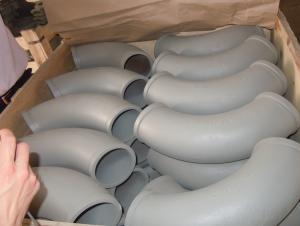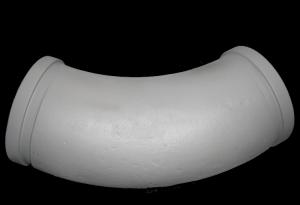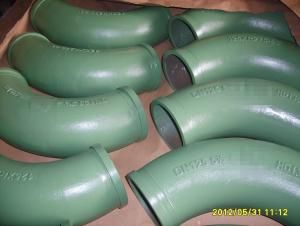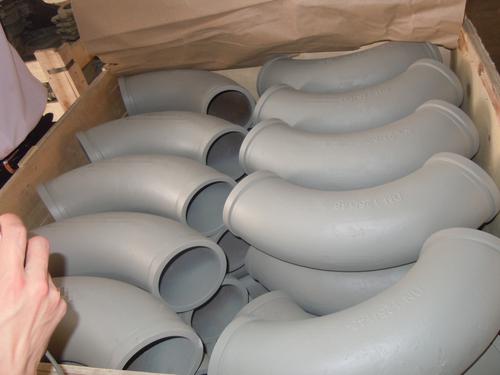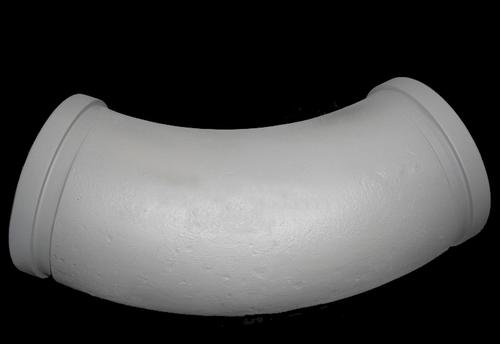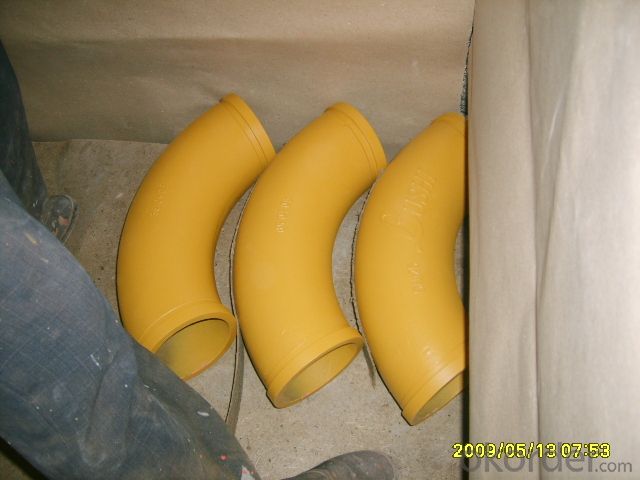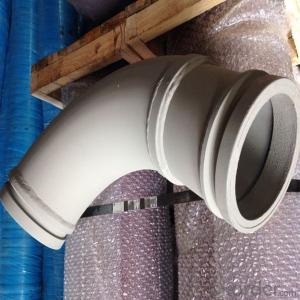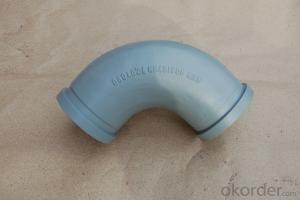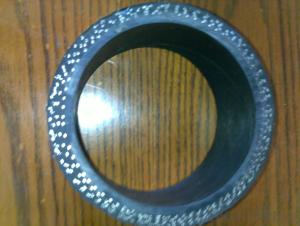Concrete Pump Truck Parts Elbow Bend R281 DN120 142Flange 90DGR Casting
- Loading Port:
- China Main Port
- Payment Terms:
- TT OR LC
- Min Order Qty:
- -
- Supply Capability:
- -
OKorder Service Pledge
OKorder Financial Service
You Might Also Like
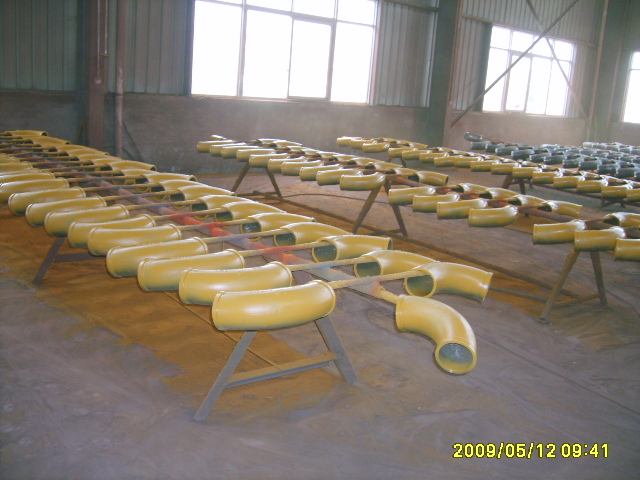
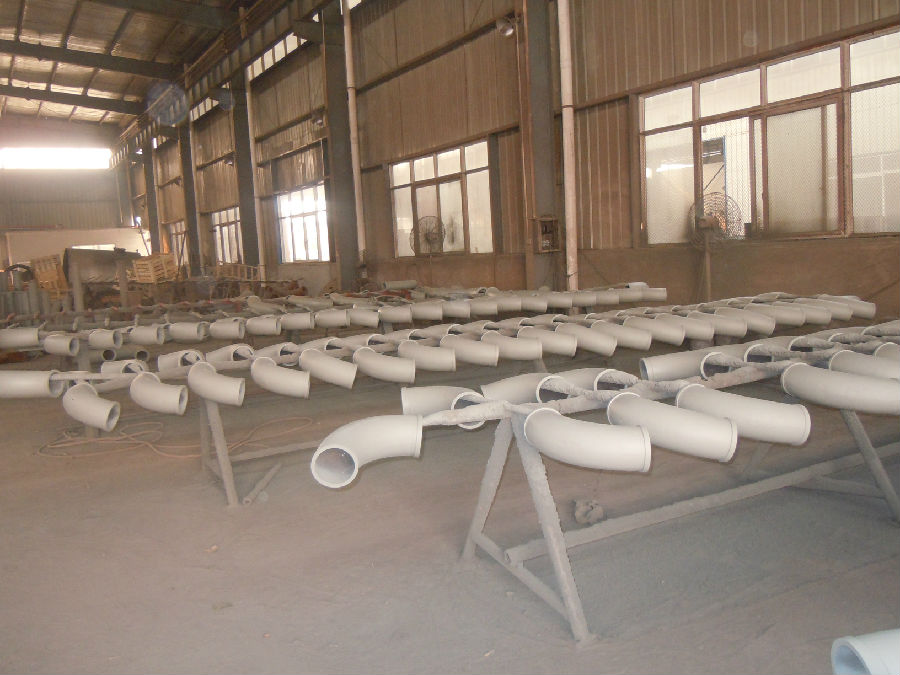
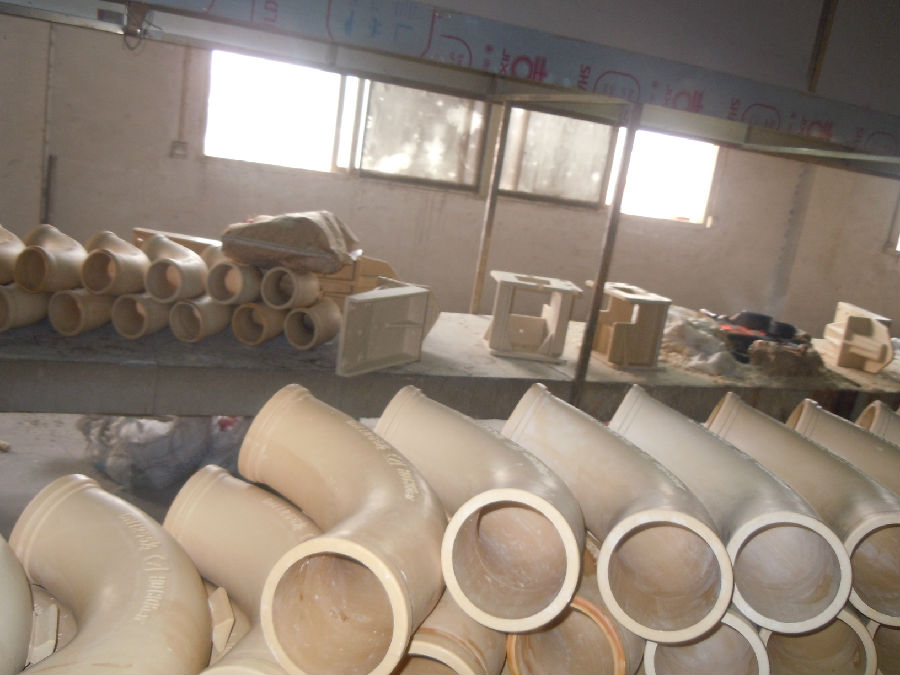

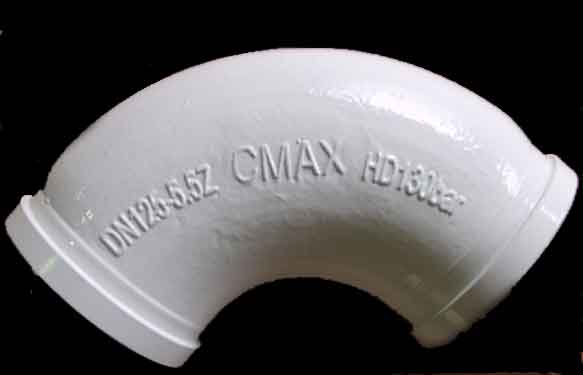
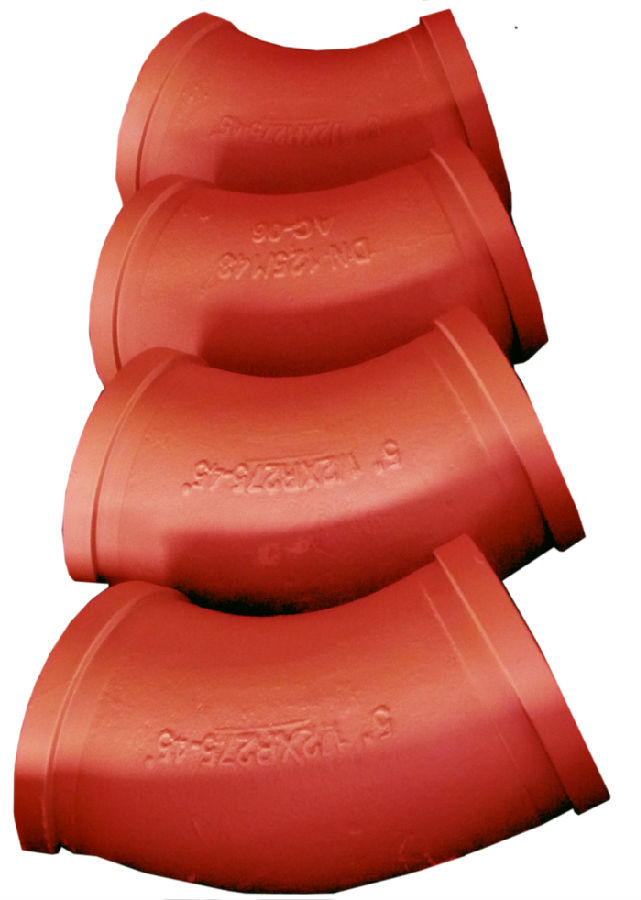
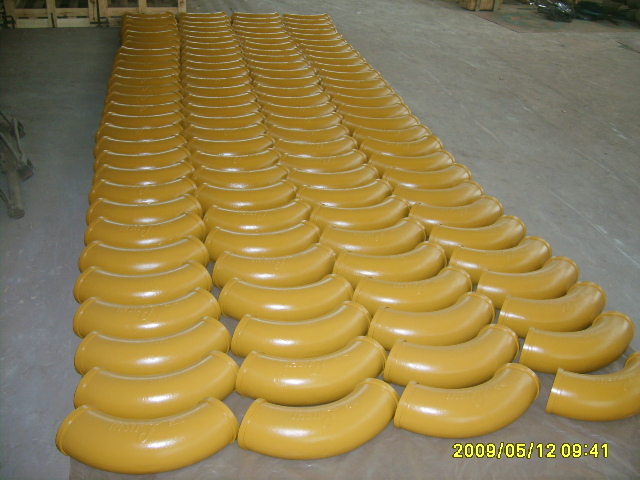

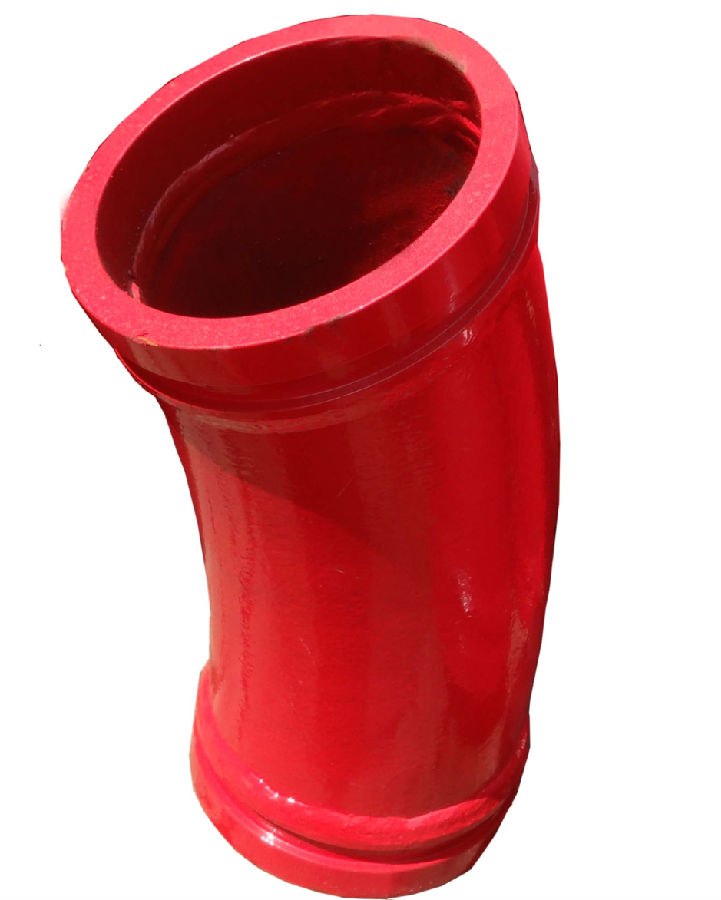
Product Description:
Product Name: Concrete Pump ELBOW DN120
1. Specification of Concrete Pump ELBOW DN120
Dimensions: DN120
Radius: 281mm
Flange: SK, ZX, F&M
Degree: 90
Material: #20 steel, ST52
Thickness: 4.5mm,6mm,7.1mm,7.5mm,10mm,
Working pressure: 180MPa
Notes: total series of concrete pump ELBOW for different brand concrete pump(PUTZMEISTER, SCHWING, CIFA, SANY, ZOOMLION, IHI, KYOKUTO Etc) available from us.
2. Application of Concrete Pump ELBOW DN120
Widely used on concrete pump truck, concrete placing boom, trailer concrete pump etc, for concrete delivery pipe connection.
Our concrete pump bends have been successfully exported to many countries from 1998, Our main markets as below: Middle East, Southeast Asia, America, Brazil, Italy, Russia, South Africa etc
Aiming at the largest concrete pump parts manufacturer, and reliable, professional supplier in China, we can supply concrete pump elbows, delivery pipes, casting or forging couplings, end rubber hoses, rubber pistons, tungsten wear plates, delivery cylinders, and other hydraulic parts, one stop service for your concrete pump parts and accessory business.
3. Package and Delivery of Concrete Pump ELBOW
Every 30pcs put in one seaworthy wooden box, and 20 boxes in one 20feet container.
- Q: How do I properly maintain and replace hydraulic hoses in concrete pump spare parts?
- To ensure the smooth functioning and longevity of your equipment, it is crucial to properly maintain and replace hydraulic hoses in concrete pump spare parts. Here are some effective steps you can take: 1. Conduct regular visual inspections to identify any signs of wear, damage, or leaks. Look for bulges, cracks, abrasions, or fraying. Pay attention to fittings, connections, and bends in the hose. 2. Implement a preventive maintenance schedule to reduce the chances of unexpected hose failure. Clean the hoses regularly to remove dirt, debris, and concrete residues that may cause abrasion or clogging. Use a mild detergent and water, and ensure thorough drying. 3. Store hydraulic hoses in a clean, dry, and temperature-controlled environment when not in use. Protect them from direct sunlight, extreme temperatures, and chemicals to avoid degradation. 4. Handle hydraulic hoses with care to prevent damage. Avoid dragging them on rough surfaces or sharp edges that can cause cuts or abrasions. Minimize excessive kinking or twisting, as it weakens the internal structure. 5. Replace hydraulic hoses promptly upon noticing signs of wear, damage, or leaks. Do not wait for hose failure, as it can lead to costly downtime and safety hazards. Follow the manufacturer's recommendations for replacement intervals. 6. Use high-quality replacement hoses that are compatible with your concrete pump. Choose hoses that meet industry standards and specifications for durability in concrete pumping conditions. 7. Properly install replacement hoses, ensuring correct routing and secure connections to fittings. Use appropriate tools and techniques to tighten fittings, avoiding over-tightening that can damage the hose or fittings. 8. Provide regular training to your staff on proper maintenance, inspection, and replacement procedures for hydraulic hoses. This will enhance their knowledge and skills, reducing the risks of improper handling or installation. By following these steps, you can effectively maintain and replace hydraulic hoses in concrete pump spare parts, ensuring the safety and efficiency of your equipment. Always refer to the manufacturer's guidelines and seek professional assistance when needed.
- Q: How often should concrete pump control valves be inspected and replaced?
- Concrete pump control valves should be inspected regularly, at least once every six months, to ensure they are in proper working condition. However, the frequency of replacement depends on various factors such as usage, maintenance, and wear and tear. It is recommended to replace control valves as soon as signs of significant damage or malfunctioning are observed during the inspections.
- Q: How often should concrete pump accumulators be inspected and replaced?
- Concrete pump accumulators should be inspected at least once a year to ensure their proper functioning and identify any potential issues. However, the frequency of replacement depends on various factors such as usage, maintenance, and the manufacturer's recommendations. It is recommended to consult the equipment manual or contact the manufacturer for specific guidelines on replacement intervals.
- Q: Are there any specific guidelines for the installation of pipe or hose assemblies in concrete pump spare parts?
- Concrete pump spare parts have specific guidelines for the installation of pipe or hose assemblies, which are crucial for the pump system's proper and safe functioning. To ensure this, here are some key guidelines to consider: 1. Size and Compatibility: The pipe or hose assemblies must be appropriate in size and compatible with the concrete pump system. They should meet the pump's specifications and be designed for the intended application. 2. Correct Alignment: It is essential to install the pipe or hose assemblies straight, without any kinks or bends that may restrict the flow of concrete or cause blockages, thus ensuring efficient operation. 3. Secure Connections: To prevent leaks or disconnections during operation, all connections, including fittings and couplings, should be securely tightened. It is advisable to use proper tools and techniques to ensure reliable and tight connections. 4. Support and Protection: Proper support and protection of pipe or hose assemblies are necessary to prevent damage or wear. They should be securely fastened to minimize excessive movement or vibration during pumping operations. 5. Clearances and Accessibility: Maintaining sufficient clearances between the pipe or hose assemblies and surrounding structures or equipment allows for easy inspection, maintenance, and replacement if necessary. 6. Proper Sealing: Suitable sealing materials should be used to properly seal all joints and connections. This is crucial for maintaining the pumping system's integrity and preventing any environmental or safety hazards caused by leakage. 7. Regular Inspection and Maintenance: Regularly inspecting the pipe or hose assemblies for signs of wear, damage, or degradation is important. Promptly addressing any issues ensures the continued safe operation of the concrete pump system. By following these guidelines, the proper installation of pipe or hose assemblies in concrete pump spare parts can be ensured, promoting safe and efficient concrete pumping operations. It is also advisable to consult the manufacturer's recommendations and refer to any specific guidelines provided with the spare parts.
- Q: Can concrete pump spare parts be painted or coated for increased durability?
- Yes, concrete pump spare parts can be painted or coated for increased durability. Painting or coating the spare parts can help protect them from corrosion, wear, and other forms of damage. By applying a layer of paint or coating, the spare parts can have improved resistance to harsh environmental conditions, chemicals, and moisture. Additionally, certain paints or coatings can offer additional benefits such as heat resistance or non-stick properties, which can further enhance the durability and performance of the spare parts. It is important to use appropriate paints or coatings that are specifically designed for the materials and conditions the spare parts will be exposed to, to ensure optimal adhesion and longevity.
- Q: What are the advantages of using carbon fiber components in concrete pump spare parts?
- There are several advantages of using carbon fiber components in concrete pump spare parts. Firstly, carbon fiber is extremely lightweight yet incredibly strong, which allows for reduced weight and increased durability of the spare parts. This not only makes them easier to handle and transport, but also enhances their overall performance and longevity. Secondly, carbon fiber has a high resistance to corrosion and chemicals, making it highly suitable for use in concrete pumping applications where exposure to various substances is common. This significantly extends the lifespan of the spare parts, reducing maintenance and replacement costs in the long run. Additionally, carbon fiber components offer improved fatigue and impact resistance, ensuring they can withstand the demanding conditions and high stresses involved in concrete pumping operations. This enhances the reliability and safety of the equipment, minimizing the risk of failure or breakdown during use. Furthermore, carbon fiber has excellent thermal and electrical insulation properties, reducing heat transfer and the risk of electrical conductivity. This makes it ideal for use in concrete pump spare parts that operate in extreme temperatures or are exposed to electrical currents, enhancing their overall performance and safety. In summary, the advantages of using carbon fiber components in concrete pump spare parts include lightweight yet strong construction, high resistance to corrosion and chemicals, improved fatigue and impact resistance, as well as enhanced thermal and electrical insulation properties.
- Q: How do concrete pump spare parts contribute to the overall performance of the pump?
- Enhancing the overall performance of the pump, concrete pump spare parts play a crucial role. These spare parts are specifically designed to endure the harsh and demanding conditions of pumping concrete, guaranteeing the efficiency and longevity of the pump. An important factor in the pump's overall performance is the ability of concrete pump spare parts to enhance pumping capacity and efficiency. These spare parts, including pump cylinders, pistons, and valves, are designed to ensure a consistent and smooth flow of concrete without any interruptions. By maintaining a steady flow, these spare parts maximize the pump's capacity, enabling it to handle larger volumes of concrete in less time. Furthermore, concrete pump spare parts contribute to the pump's performance by improving its durability and reliability. These spare parts are made from high-quality materials like hardened steel and wear-resistant alloys, specifically chosen to withstand the abrasive nature of concrete. This ensures that the pump can operate continuously without experiencing premature wear or failure. Concrete pump spare parts also ensure the safety of the pump operators and the environment. For instance, wear plates and cutting rings prevent concrete leakage, reducing the risk of accidents and environmental contamination. Similarly, seals and gaskets provide a secure and tight connection between different components, preventing leaks or malfunctions. Moreover, concrete pump spare parts reduce downtime and maintenance costs. As these spare parts undergo wear and tear during operation, they are designed to be easily replaceable. This allows for quick and efficient repair or replacement of damaged parts, minimizing the pump's downtime. Additionally, using genuine and high-quality spare parts reduces the need for frequent repairs and maintenance, resulting in lower overall maintenance costs. In conclusion, concrete pump spare parts are vital components that significantly contribute to the pump's overall performance. They enhance its pumping capacity, durability, and reliability, ensuring a smooth and efficient operation. Furthermore, these spare parts promote safety, reduce downtime, and minimize maintenance costs, making them indispensable for the optimal performance of concrete pumps.
- Q: How often should hopper grate pins be inspected or replaced in a concrete pump?
- Hopper grate pins in a concrete pump should be inspected regularly to ensure proper functioning and prevent any potential issues. As a general guideline, it is recommended to inspect hopper grate pins at least once a month or after every 200 hours of operation, whichever comes first. However, the frequency of inspection may vary depending on the specific conditions and usage of the concrete pump. During the inspection, it is important to check for any signs of wear, damage, or deformation in the hopper grate pins. If any issues are identified, they should be promptly addressed to avoid further damage and ensure safe and efficient operation of the concrete pump. The replacement of hopper grate pins should be done as soon as they show significant signs of wear or damage that could compromise their functionality. It is essential to follow the manufacturer's guidelines and recommendations when replacing hopper grate pins, as they may vary depending on the specific model and design of the concrete pump. Regular inspections and timely replacements of hopper grate pins contribute to the longevity and reliability of the concrete pump, minimizing the risk of unexpected breakdowns and ensuring optimal performance.
- Q: What are the indications of a clogged or damaged concrete pump filter?
- Some indications of a clogged or damaged concrete pump filter include decreased pumping pressure, reduced flow rate, increased fuel consumption, and irregular or inconsistent concrete output. Additionally, if the concrete pump filter is severely clogged or damaged, it may cause the pump to overheat or shut down completely. It is important to regularly inspect and clean or replace the filter to ensure optimal performance and prevent any potential damage to the pump.
- Q: What are the signs of a worn-out concrete pump piston?
- Some signs of a worn-out concrete pump piston may include decreased pumping efficiency, loss of pressure, increased noise or vibrations during operation, inconsistent concrete flow, and visible wear or damage on the piston surface.
Send your message to us
Concrete Pump Truck Parts Elbow Bend R281 DN120 142Flange 90DGR Casting
- Loading Port:
- China Main Port
- Payment Terms:
- TT OR LC
- Min Order Qty:
- -
- Supply Capability:
- -
OKorder Service Pledge
OKorder Financial Service
Similar products
Hot products
Hot Searches
Related keywords
